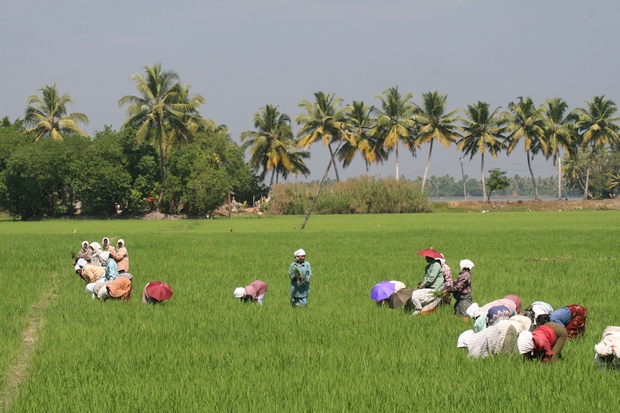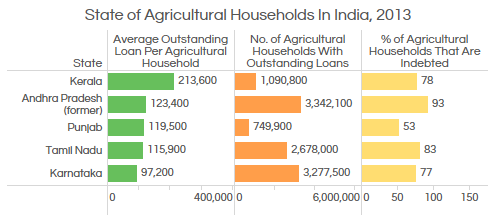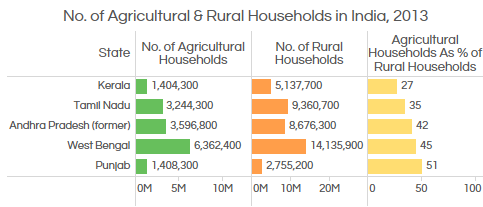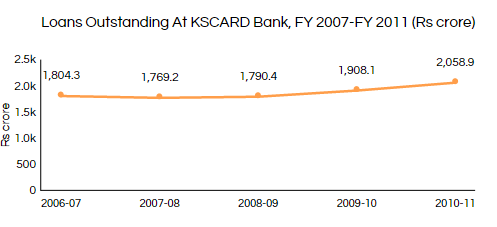Kerala’s New Gambit: Pay Interest On Agri Loans

The Kerala government is planning a unique experiment to tackle the agrarian crisis. Presenting the budget for the year 2015-16, Finance Minister K. M. Mani announced that the government will pay the entire interest payable by farmers on every loan where the farmer repays the principal on time.
The minister also set aside Rs 125 crore next year for the scheme. “I am confident that this will increase the inflow of agricultural credit into the state by an additional Rs 2,000 crore,” the minister said in his budget speech.
A report by the National Sample Survey Organisation (NSSO) titled Key Indicators of Situation of Agricultural Households in India released in December 2014 said that Kerala was the state with the highest average outstanding loan per agricultural household.

Source: NSSO; Loan amount in Rs.
Kerala had only 27% rural households classified as agricultural households as against the national average of 57.8%. Out of a total of 5,137,700 rural households in Kerala, only 1,404,300 households were agricultural households. (This means only 5.5 million people are dependent on agriculture in Kerala.)

Source: NSSO
Kerala was followed by Tamil Nadu with 34.7% of rural households classified as agricultural, ahead of former Andhra Pradesh (41.5%), West Bengal (45%) and Punjab (51.1%). The percentage for India as a whole is 57.8%.
How much agriculture credit is outstanding in Kerala? Here’s a look at the numbers from Kerala State Co-operative Agricultural and Rural Development Bank (KSCARD Bank):

Source: KSCARD Bank
Meanwhile, a study by Reserve Bank of India in 2013 found that the gross level of credit of central credit bodies in Kerala averaged Rs 34,401 crore ($5.5 billion) for the years 2009-10 to 2011-12. Out of this, only Rs 6,926 crore ($1.12 billion) was for agriculture loans.
Kerala, which has a population of 33 million, is ahead on all social indicators like education, health and sex ratio. While the literary rate is 90.86% as against the national rate of 73%, sex ratio (females per 1,000 males) is 1,058 as against the national average of 943.
Infant mortality rate, an estimate of infant deaths for every 1,000 live births, is only 12 in Kerala as against the national average of 40.
Maternal mortality ratio, the number of women aged 15-49 dying due to maternal causes per 100,000 live births, is 61 in Kerala as against the national average of 167.
The question is – will the experiment of the Congress-led United Democratic Front (UDF) work in Kerala? And can that be replicated across the country instead of the controversy-ridden Rs 520,000 crore ($8.39 billion) agricultural debt-waiver scheme of the first UPA government?
Image credit: Flickr/Anne Roberts
__________________________________________________________________________
“Liked this story? Indiaspend.com is a non-profit, and we depend on readers like you to drive our public-interest journalism efforts. Donate Rs 500; Rs 1,000, Rs 2,000.”


